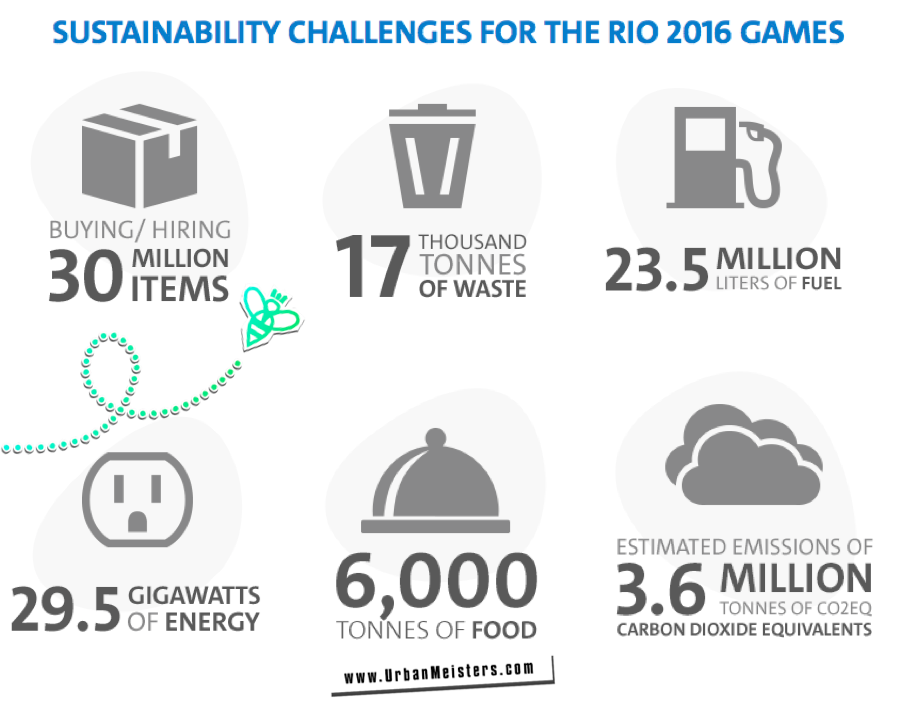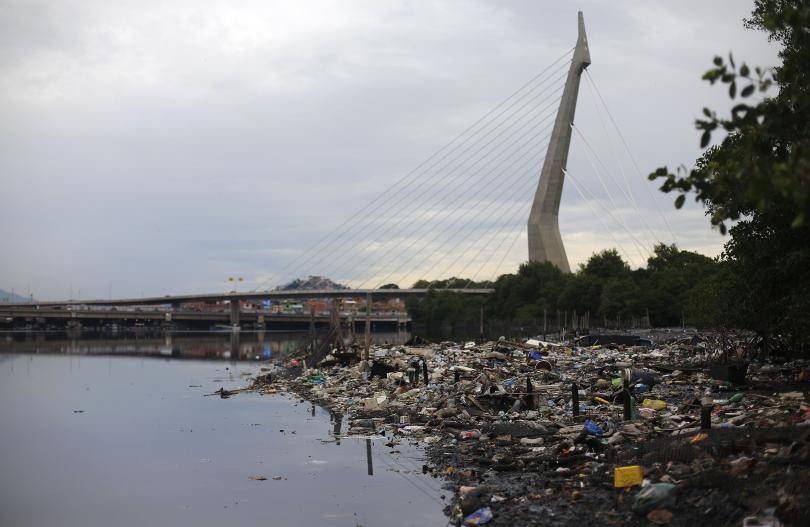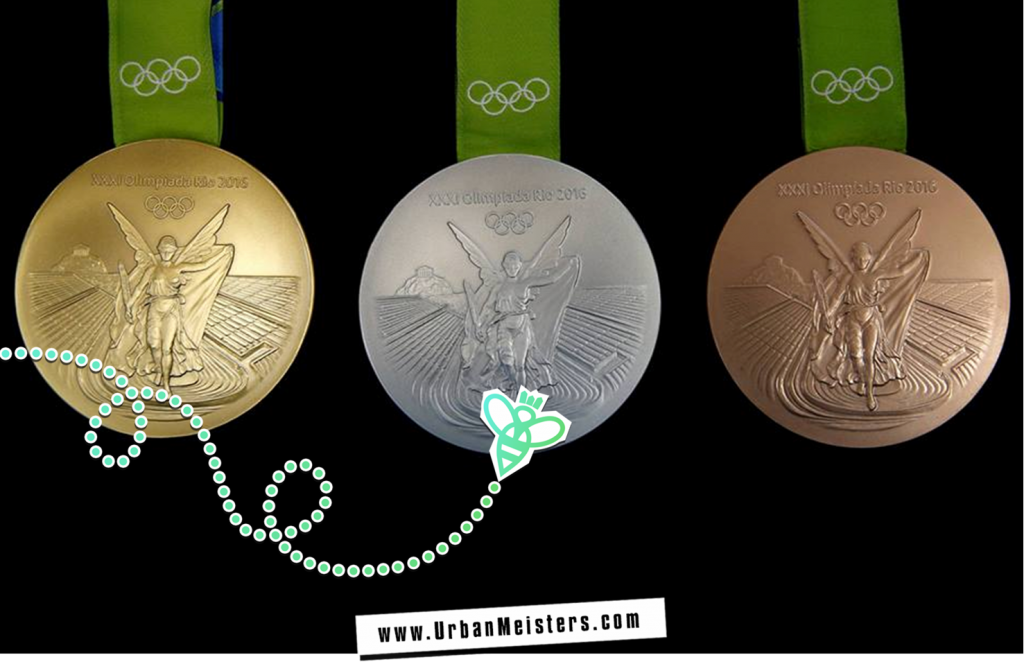Has Rio Olympics 2016 fallen short of it’s promise to make this mega event the Green Games For a Blue Planet as promised? Are the sustainability and pollution control efforts of Rio Games just #GreenWashing or is there some real substance out there?
UrbanMeisters, today we shall delve into just how green the Rio Olympics 2016 really were, because the games are soon coming to an end and it’s important to evaluate just how well or poorly has Rio performed on it’s ambitious sustainability agenda as well as pollution control. But first let’s examine how sustainable have the Olympic Games been thus far.
Sustainability at Olympic Games
Sustainability has been a crucial part of any modern Olympic Games project since early 2000s. It is also a pivotal concept in the Olympic Agenda 2020 initiative – a charter set out by The IOC to bring sustainability in this mega sporting event.
« THE IOC’S ROLE IS…TO ENCOURAGE AND SUPPORT A RESPONSIBLE CONCERN FOR ENVIRONMENTAL ISSUES, TO PROMOTE SUSTAINABLE DEVELOPMENT IN SPORT AND TO REQUIRE THAT THE OLYMPIC GAMES ARE HELD ACCORDINGLY… » says the Olympics Charter.
Why you ask? Well one fact is that such mega events result in massive emissions and wastes. Imagine the confluence of scores of people descending on one city– transport, housing, food, energy- consumption is on a massive scale. Till the late 1990’s nothing was done to offset this enormous carbon footprint of the games. But things changed with the International Olympics Committee waking up to this not so pretty picture. But a bigger reason was the fact that the staging of this event in a city has many far reaching implications for growth and urban development. As such the IOC developed guidelines to assist the Olympic Games organisers embed sustainability in the planning and staging of their Olympic Games and ensure that the Olympic Games create change that is sustainable and aligned with the city’s long-term vision. This sports mega event is a huge opportunity to promote sustainable development message as well environmental action.
Sydney Olympics 2000 were the first Games to spearhead the sustainability efforts- the entire Olympic Village was the world’s largest solar powered settlement. In the run up to the Beijing event in 2008, an estimated $17 billion were spent on key environmental projects in the city. And the London Games in 2012 surpassed all expectations and became the Greenest Olympics in the history of the event with it’s « One Planet Olympics » theme by reducing emissions by 20%.
Enter Rio Olympics 2016 Green games bid
Rio Olympics 2016 was touted with much fanfare and conviction as the GREEN GAMES FOR A BLUE PLANET! In 2009, when the Rio 2016 Organizing Committee pitched for hosting the Olympic Games, sustainability was a key point. To quote the committee President, Mr. Carlos Arthur Nuzman,
‘Sports can and should play a leading role in the promotion of a more sustainable world. Since the 1992 United Nations Conference on Environment and Development in Rio, the Olympic movement’s environmental awareness has grown. Our goal is to integrate sustainability into all dimensions of the Rio 2016 Summer Olympics and Paralympics Games and thus create a legacy for all society.’
With UN Environment Programme (UNEP) working in close cooperation with the organising committee, all seemed to be on track with the Games. The organisers first identified key environment concerns(see image below on sustainability challenges for Rio Games) and then committed to set targets and initiatives- ambitious plans for offsetting carbon emissions along with sustainability partner DOW chemicals. Some key agendas were: reducing traffic congestion on the roads and thereby improving air quality by building better transport system, cleaning up local water bodies most importantly the Guanabara Ba, improving amenities in the favelas and preserving nature. As the games began and have proceeded thus far, reports have stated that Rio Olympics have fallen mighty short of their targets and promises. Here’s a snapshot of sustainability challenges that were identified by Rio Olympics Committee prior to the event basis past history and data of the Olympic Games.

Source
Why has Rio Olympics 2016 failed to deliver on sustainablity?
Let’s examine in what ways has Rio Olympics 2016 not delivered on its promise of creating the « greenest games ever ».
SO SO- Carbon offsetting targets hit & missed
To offset the immense carbon emissions of this mega event, Rio Olympics 2016 had promised planting 24 million seedlings. Before the games started the target achieved was 5.5 million trees. So still a lot of planting ahead was needed.
Though we should point out here that along with partner DOW the Games have implemented an extensive carbon mitigation programme to offset two million tonnes of CO2 equivalent through various projects in agriculture, packaging technology, building and manufacturing. 50% of the carbon emissions have already been offset with noteworthy initiatives like the buses used for transporting the athletes running on bio-diesel.
The stadiums too have been designed to make optimum use of natural light and use solar power. Also the Games Village will be converted into condos after the event is over so as to not lay waste the construction and infrastructure.
CONTROVERSIAL- Golf Course
One of the biggest green controversies of Rio Olympics 2016 was the construction of the $60 million Golf Course for the event on the sandbank habitat of the Marapendi Environmental Protection Area- a coastal habitat for sandbank native vegetation and animal life, including endangered species. Environmentalists insist it has destroyed this bio diversity hotspot but the organisers claim otherwise. This despite the fact that the city already has 2 world class Golf Courses!

Source
FAILED- Unclean waters of Guanabara Bay
Rio Olympics 2016 Committee had promised to clean up the highly polluted water body Guanabara Bay which has dire water quality due to lack of proper sanitation and sewage treatment of the discharge of 9 million people that inhabit the area around it(See image of water body below). This was crucial as all Olympic sailing events retaking place here. The promise was to treat 80% of this waste water before games but going by the large amounts of untreated sewage still being discharged in it, things don’t look so green. Officials have accepted that only 48% at most of the unhealthy, polluted water can be treated. Athletes have repeatedly complained about the smell, debris and sewage they have encountered in the water. They have been advised to keep their mouths closed when swimming or sailing because the waters are virus ridden. Of course the water in the designated events arenas looks blue because it has been treated to look clean!
FAILED- Beware of air
While sewage water has been raising quite a stink at Rio Olympics 2016, air quality is not faring so good either. Air pollution levels accentuated by rising temperatures are interfering with athletic performance. The city air pollution levels have always been off the charts due to heavy vehicular traffic congestion. Rio has for years surpassed all WHO limits for the most dangerous air pollutant – called particulate matter and thousands die annually in this metropolis due to diseases related to air pollution. Reuters reported that independent tests done bit it showed that Rio’s air is dirtier and deadlier than portrayed by authorities. And this poor air quality makes high-performance outdoor sports difficult. The mega event in an already congested city has added to carbon emissions greatly- just the fuel used for the event cumulates to 23.5 million litres according to Rio Olympics 2016 site. The organising committee had promised to clean the air with an improved public transportation system in time for the games which would also continue after as a legacy project. The promised $3 billion subway transport system was hugely delayed and has just barely opened.
No good green news from Rio Olympics 2016?
Now we wouldn’t say that! Urbanmeisters, it’s not been all green washing form the Rio quarters. The committee has launched many sustainable projects to counter the Olympics carbon footprint and two particular projects caught our attention.
GREEN THUMB UP- Food Waste Management
The Food Waste Management initiative was successfully launched by the organisers. The project called « Reffetto-Rio » is aimed at turning the surplus food from the Olympic Village into meals for the people in need. This is a fabulous idea as according to Rio Olympics officials, some 6000 tonnes of food waste would be generated as part of the mega part! Also as part of the initiative, cooking and nutrition classes are being held for the young population from the needy areas by 45 chefs from around the world volunteering for this initiative.
GREEN THUMB UP- Recycle Programme
The other green initiative is the Rio Olympics Recycle Programme – a joint venture of Brazilian waste pickers, Rio authorities and Coca-Cola. Rag picking or waste picking is a common ‘profession’ in marginalised sections of Rio. The authorities have enlisted 240 waste pickers from various co-operatives to take care of Games sites recyclable waste. The profits from selling this material to scrap merchants will be shared between these workers along with a fixed earning for the job. Tania Braga, Head of Sustainability for Rio Olympics 2016, announced that this programme was expected to handle 3,500 tonnes of recyclable waste during the games!
A little but very interesting green nugget of information is that for the first time in the Olympic Games history, the medals for athletes are being produced sustainably. According to Rio Olympics 2016 official site, « More than 30 % silver and bronze used in this production are recycled ». Reportedly the silver came from mirrors and car windows and bronze from old discarded equipments. Even the gold is 100% mercury free- which was a big concern earlier and the ribbons too are more eco-friendly partly made with recycled plastic bottels. Even the flowers that are normally given to the athletes have been replaced by small sculptures of Rio’s Olympics logo.
So, in conclusion….
Sports is very powerful way of positively influencing the society and uniting athletes and spectators behind a common passion. Environmental issues have been communicated in the past mostly with the same clichés of the polar bear swimming on the last piece of ice and similar imagery. While powerful and definitely eye capturing, this kind of narrative creates a rather gloomy feeling and makes people run away from this very important issue rather than actually take action. On the other hand aligning with events like the Olympics create a far more impactful and positive change. Mega sports events like Olympics are the ideal canvas for green concerns because they have such a global and huge reach in terms of viewership and participation. Also, athletes are the perfect ambassadors for driving home the green change message because people look up-to them. Take the case of Rio 2016- the opening ceremony, watched by an estimated 3 billion people world wide according to CNN, relayed a powerful message on global climate change awareness which is quite a departure for this usually glamorous event. It really does help in uniting people across the globe behind crucial environment issues.
Rio 2016 has certainly not fully delivered on it’s very grandiose environmental pledges and it’s mission to make it the GREEN GAMES FOR A BLUE PLANET with some hardcore critics in fact calling it the most « Greenwasher Games » in history!
But we say that organising such huge events in a sustainable way should not be only the responsibly of the hosts, but also the participants. What have the over 10.000 athletes and over 200 member nations done? Prior to this article we questioned several of the big Olympic teams like US and China on what are they doing to make these games be as green as possible, … with no answer which makes us conclude that nothing much has been done from their side. The US baketball team reportedly did not stay in the Olympic Village, but was cruising on a luxury boat! What a pity! If they had only donated this money to be invested in sustainable projects instead!
One of the most environmentally conscious nations, Germany had stated prior to the Games, that it would help the organisers of big sports events with sustainability initiatives according to this recent recommendation paper of the Environment and Sports advisory council. However as you can see it seems there are more ‘good intentions’ for the future rather than any concrete action at Rio.
Same is true for the 11 worldwide sponsers of the Games like Atos, Bridgestone, GE, McDonald’s, Omega, Panasonic, P&G, Samsung and Visa? How did they contribute or help the organisers in fulfilling the sustainability ambitions?
The sustainability and environment cause is too big to be left only on the host nation- though no doubt they have the biggest responsibility. We really hope the future Games make sustainability a real key agenda and responsibility is shared by host nation, participating teams and sponsors. Hopefully subsequent Games will keep setting the sustainability performance bar higher like London Olympics did. This especially goes out for Paris 2024 bid which we hope will become a reality!
Imagine an Olympics venue powered by energy athletes burn! Fascinating concept proposed by GB Energy – even though external power will be needed to supplement this for full event, but it sure gives you the right GREEN signal on the way things are headed! It would be a truly collaborative effort to bring down the carbon footprint of the mega event.



![[ALERTE GREENWASHING – CHAMBRE ENFANT] Les conseils pratiques d’un père engagé](http://urbanmeisters.com/wp-content/uploads/bfi_thumb/dummy-transparent-pyhloyclal4p5ty8tb4matytlyd4xyugzcd2z17fr6.png)